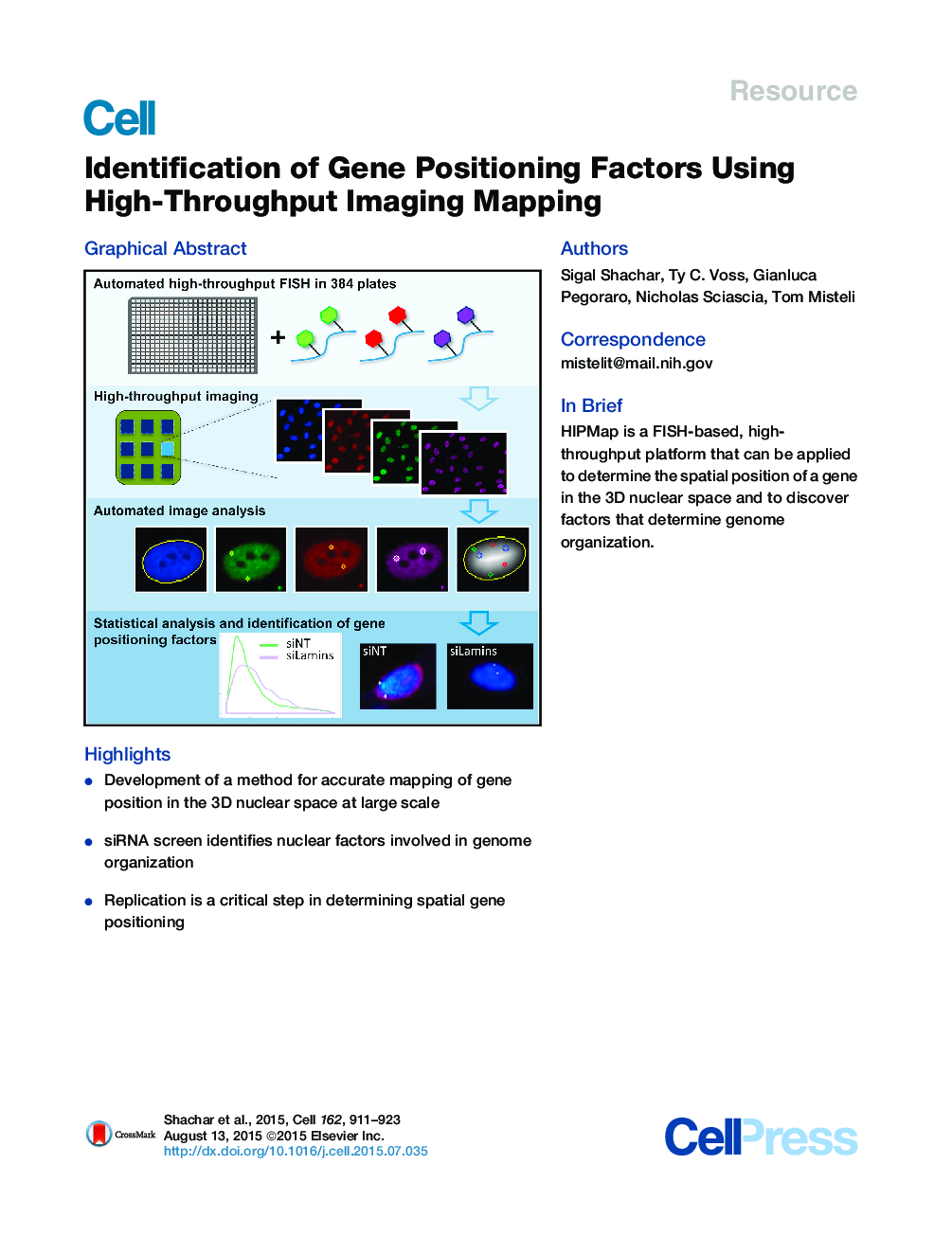| Article ID | Journal | Published Year | Pages | File Type |
|---|---|---|---|---|
| 2035211 | Cell | 2015 | 13 Pages |
•Development of a method for accurate mapping of gene position in the 3D nuclear space at large scale•siRNA screen identifies nuclear factors involved in genome organization•Replication is a critical step in determining spatial gene positioning
SummaryGenomes are arranged non-randomly in the 3D space of the cell nucleus. Here, we have developed HIPMap, a high-precision, high-throughput, automated fluorescent in situ hybridization imaging pipeline, for mapping of the spatial location of genome regions at large scale. High-throughput imaging position mapping (HIPMap) enabled an unbiased siRNA screen for factors involved in genome organization in human cells. We identify 50 cellular factors required for proper positioning of a set of functionally diverse genomic loci. Positioning factors include chromatin remodelers, histone modifiers, and nuclear envelope and pore proteins. Components of the replication and post-replication chromatin re-assembly machinery are prominently represented among positioning factors, and timely progression of cells through replication, but not mitosis, is required for correct gene positioning. Our results establish a method for the large-scale mapping of genome locations and have led to the identification of a compendium of cellular factors involved in spatial genome organization.
Graphical AbstractFigure optionsDownload full-size imageDownload high-quality image (246 K)Download as PowerPoint slide
